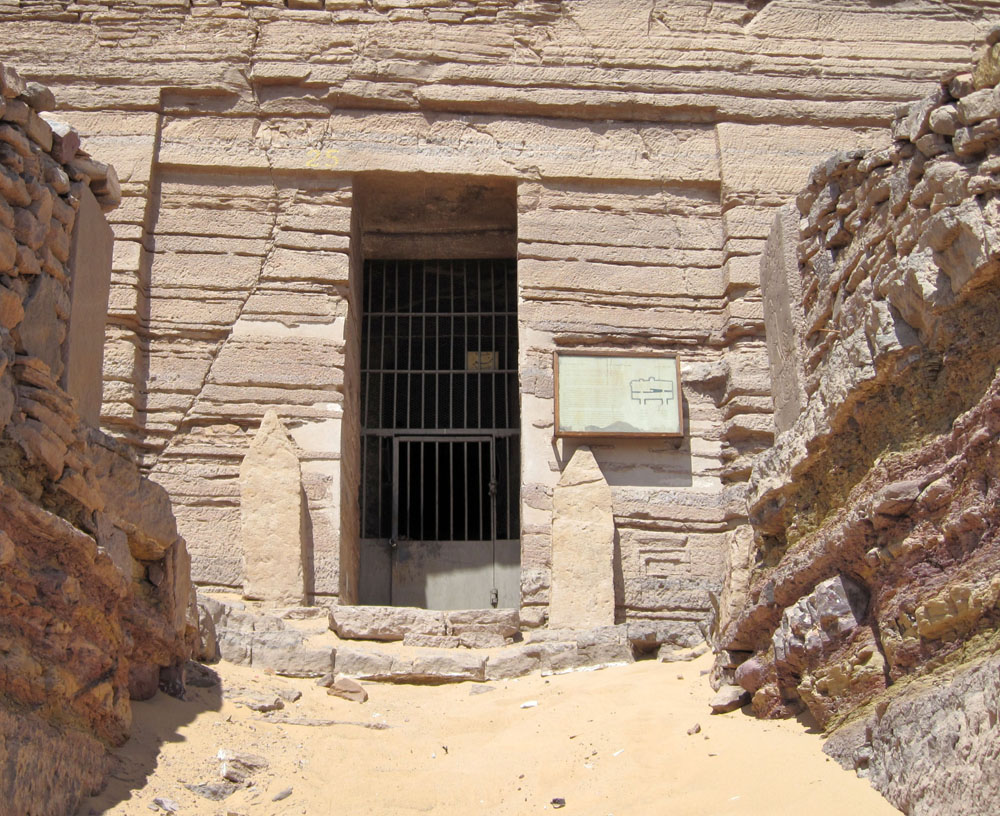
Mekhu and Sabni were father and son, both were governors of Upper Egypt during the reign of Pepi II of the 6th Dynasty. The reliefs on the walls of the tombs tell the story of the killing of Mekhu while he was on an expedition in Nubia and the efforts of his son, Sabni, to bring the body of his father back as well as his ceremonial burial. Sabni informed King Pepi II of the event and the king sent his personal embalmers to mummify the deceased governor. The tombs follow the Old Kingdom's style, with small obelisks and offering table at the entrance doorway. The Offering table of Mekhu still stands there. The tomb of Mekhu, to the left side, has 18 columns and a niche in the back wall. The decoration, in reliefs, show daily life scenes of the deceased. Sabni's tomb façade tells the autobiography of Sabni and his successful expedition to recover his father's body. The tomb has 14 pillars and the reliefs on the back wall show Sabni hunting with his daughters.
